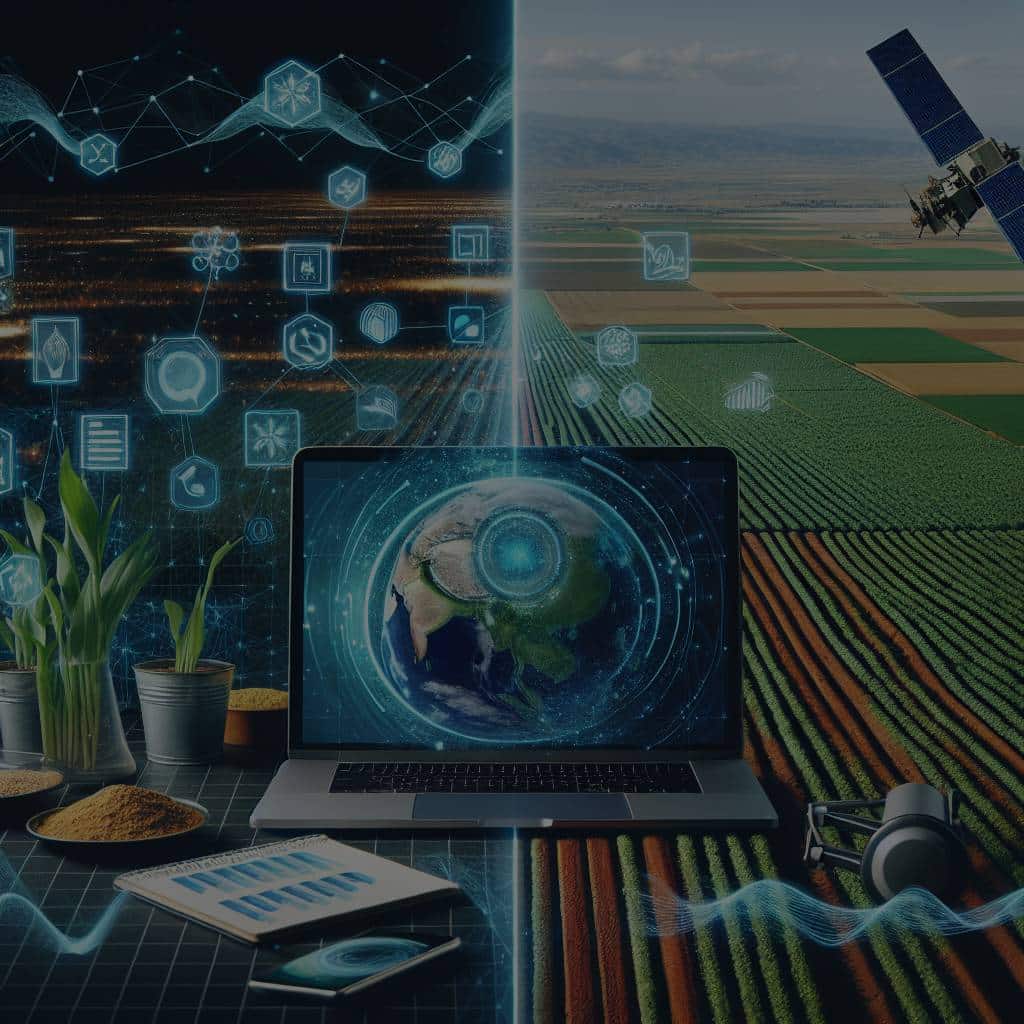Can AI and Satellite Imagery Provide Better Crop Yield Predictions for Farmers?

Powered by the increasing availability of agricultural data and rapid advancements in machine learning, the confluence of precision farming and artificial intelligence (AI) has the potential to revolutionize agriculture as we know it. Farmers are continuously looking for ways to leverage new technologies to enhance their yields and improve their long-term productivity. One of the most promising technologies in this area is the use of satellite imagery combined with AI for predicting crop yields.
The Power of Data in Agriculture
The proliferation of data in agriculture has been nothing short of phenomenal. From detailed weather data to soil composition and crop health data, farmers now have access to a wealth of information that was previously difficult to come by. This data can be harnessed to make more informed decisions about when to plant, how much to water, and when to harvest, thereby optimizing yields and reducing waste.
Topic to read : How Can AI Facilitate More Accurate Weather Forecasting and Climate Modeling?
In particular, satellite data has emerged as a powerful tool for precision agriculture. Satellite imagery can provide real-time information about crop health, soil moisture, and even pest infestations. When this satellite data is analyzed using AI algorithms, it becomes possible to make highly accurate predictions about future crop yields.
The Role of Machine Learning in Predicting Crop Yields
Machine learning, a subset of AI, is a method of data analysis that automates the building of analytical models. Instead of humans trying to make sense of vast amounts of data, machine learning algorithms can quickly sift through the data and identify patterns and trends. These insights can then be used to make predictions about future events, such as crop yields.
In parallel : Is Artificial Photosynthesis a Viable Option for Renewable Energy Production?
In the context of agriculture, machine learning models can analyze multiple factors such as weather patterns, soil composition, and crop health to predict how much a particular crop will yield in a given year. More importantly, these models can continuously learn and improve over time, meaning their predictions become more accurate as more data is fed into them.
One of the key benefits of using machine learning for yield prediction is that it can handle the complexity of agricultural systems. Farming is not a simple process – it involves a multitude of variables, from weather and soil conditions to pest and disease outbreaks. Traditional yield prediction models often struggle to handle this complexity, but machine learning algorithms thrive on it, making them ideally suited for this task.
The Intersection of Satellite Imagery and AI in Agriculture
The combination of satellite imagery and AI is a match made in heaven for agriculture. Satellite imagery provides the raw data, while AI provides the analytical horsepower to turn that data into actionable insights.
With the help of satellites, farmers can monitor their crops on a virtually real-time basis. They can see how their crops are progressing, identify any areas of concern, and take corrective action if necessary—all without needing to step foot in the field. This level of detail and immediacy was unimaginable just a few years ago, but it’s now a reality thanks to advances in satellite technology.
But the real game-changer is the way AI can analyze the satellite data. Using machine learning algorithms, AI can identify patterns in the data that might be missed by the human eye. For example, it might spot early signs of a pest infestation or a disease outbreak, allowing farmers to intervene before the problem becomes widespread.
The Promise and Challenges of AI-Based Crop Yield Prediction
The potential benefits of AI-based crop yield prediction are enormous. By making more accurate yield predictions, farmers can plan their harvests more effectively, reducing waste and ensuring a more reliable food supply. This could be particularly beneficial in regions where food security is a pressing concern.
However, the use of AI and satellite imagery in agriculture is not without its challenges. One of the main hurdles is the need for large amounts of high-quality data. While satellite imagery can provide a wealth of data, it’s not always easy to interpret, and errors or inaccuracies in the data can lead to inaccurate predictions.
Additionally, while machine learning algorithms can handle complex data sets, they require a lot of computational power. This can be a barrier for small-scale farmers or those in developing countries who may not have access to the necessary resources.
Despite these challenges, the potential benefits of AI and satellite imagery for crop yield prediction are too great to ignore. With ongoing advancements in technology, it’s only a matter of time before these tools become an integral part of farming practices worldwide. So, while the question, "Can AI and Satellite Imagery provide better crop yield predictions for farmers?" may not have a definitive answer yet, the future certainly looks promising.
The Integration of AI and Remote Sensing Technologies in Precision Agriculture
The integration of AI and remote sensing technologies – including satellite imagery – is rapidly changing the face of precision agriculture. These advancements are allowing for real-time crop monitoring and analysis, which is invaluable in making informed decisions in farming practices.
Satellite imagery offers a bird’s eye view of farmlands, enabling farmers to monitor crop health, soil moisture, and pest infestations from afar. Using this technology, farmers can quickly identify areas that need attention, such as parts of the field that are under-watered or over-fertilized. This dramatically reduces the time and resources spent on manual inspections, leading to increased efficiency and productivity.
On the other end of this technological synergy is artificial intelligence. AI, particularly its subset machine learning, holds the key to deciphering the complex data provided by satellite imagery. Through deep learning, an AI algorithm can analyze the vast amount of data obtained from satellite images and detect patterns that may be imperceptible to the human eye. For instance, it can identify signs of disease or pest infestation in crops even before they become visible to the naked eye, enabling farmers to take preventative measures in a timely manner.
Climate change, a pressing issue in modern agriculture, can also be better managed with the help of AI and satellite imagery. AI can analyze historical and real-time climate data from satellites to predict future weather patterns, helping farmers prepare for adverse weather conditions and mitigate their impact on crop yields.
Google Scholar, a widely used search engine for scientific literature, has numerous studies supporting the effectiveness of these technologies in precision agriculture. These studies highlight the potential of AI and satellite imagery to revolutionize farming practices, from improving yield prediction to enhancing food security.
Conclusion: The Future of AI and Satellite Imagery in Agriculture
In conclusion, the convergence of AI and satellite imagery offers immense potential in reshaping the future of agriculture. The ability to monitor crop health in real time, predict crop yields with enhanced accuracy, and respond promptly to threats like pests or adverse weather conditions could revolutionize farming practices across the globe.
However, it’s important to remember that the utilization of these technologies is still in its infancy and faces its own set of challenges. The need for high-quality data and significant computational power poses a barrier, particularly for small-scale farmers or those in developing nations.
Despite these hurdles, the benefits of integrating AI and satellite imagery in agriculture are substantial and cannot be overlooked. As technology continues to evolve, these tools are set to become more accessible and user-friendly, making precision farming the norm rather than the exception.
In the words of a scholar, "The future of agriculture lies not in the hands alone, but in the eyes above and the intelligence within." Farmers, researchers, and policymakers alike must be ready to embrace these technological advancements and work towards a future where farming is not just efficient, but also sustainable and resilient to climate change. The journey to better crop yield predictions, enhanced food security, and sustainable farming practices has just begun, and it promises to be an exciting one.
